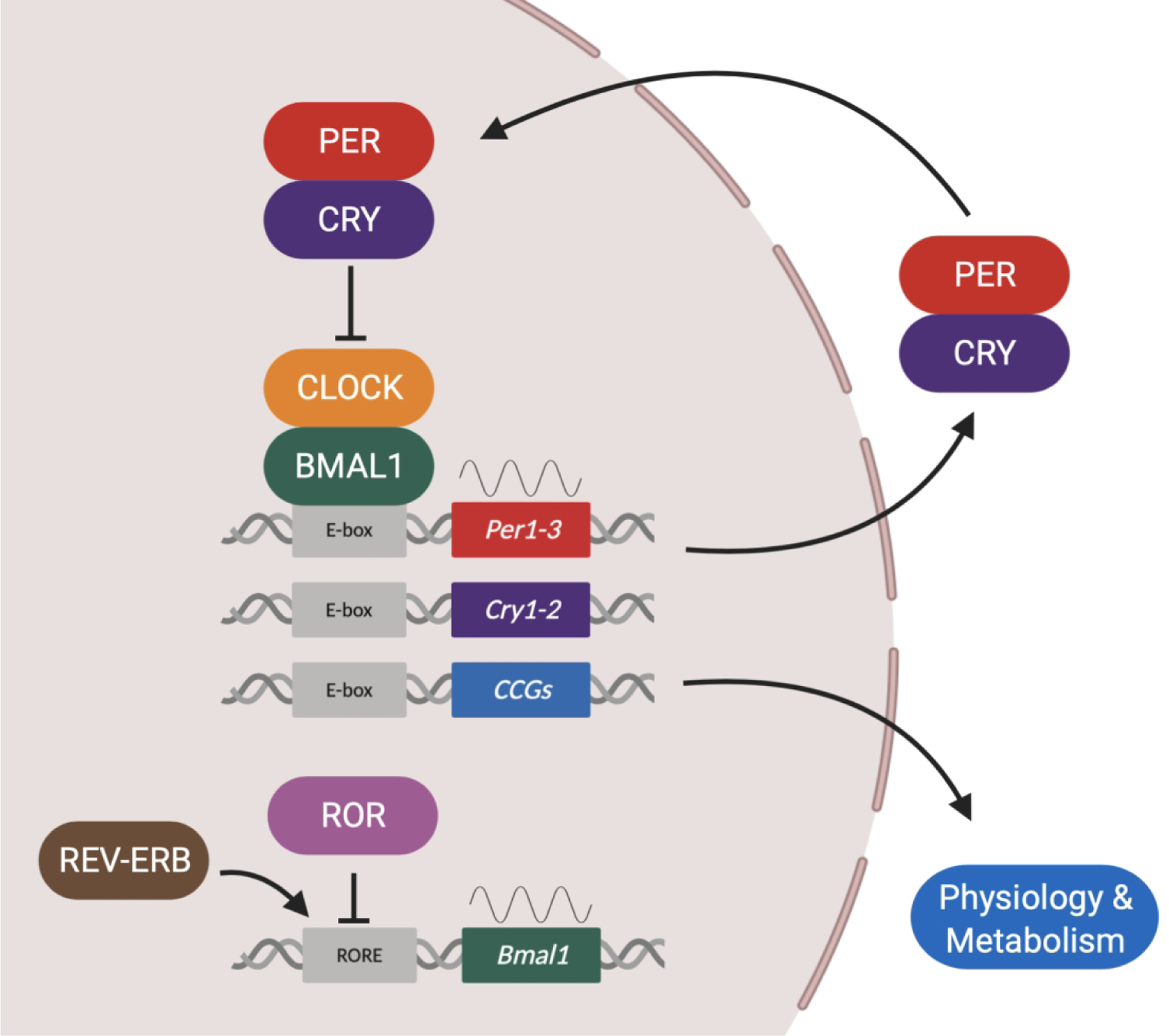Figure 1.

The molecular clock generates circadian rhythms through a transcriptional-translational feedback loop (TTFL) mechanism, in which the transcription of Period (Per1, Per2, and Per3) and Cryptochrome (Cry1 and Cry2) genes is activated by the heterocomplex formed by the PAS domain helix-loop-helix transcription factors CLOCK (or its paralogue NPAS2) and BMAL1 (also known as ARNTL) via E-boxes elements in their promoter regions. PER and CRY proteins dimerize, translocate to the nucleus, and repress their own CLOCK:BMAL1-mediated transcription. This creates a cycle that takes approximately 24 hours to be completed. In addition to the main loop, a secondary feedback loop comprises the nuclear receptors ROR and REV-ERB that activates or represses, respectively, the expression of Bmal1 gene by acting on ROR-binding elements (ROREs) within its promoter. CLOCK:BMAL1 activates the transcription of clock-controlled genes (CCGs) in a tissue-specific manner and these genes are critical for cell physiology and metabolism.
